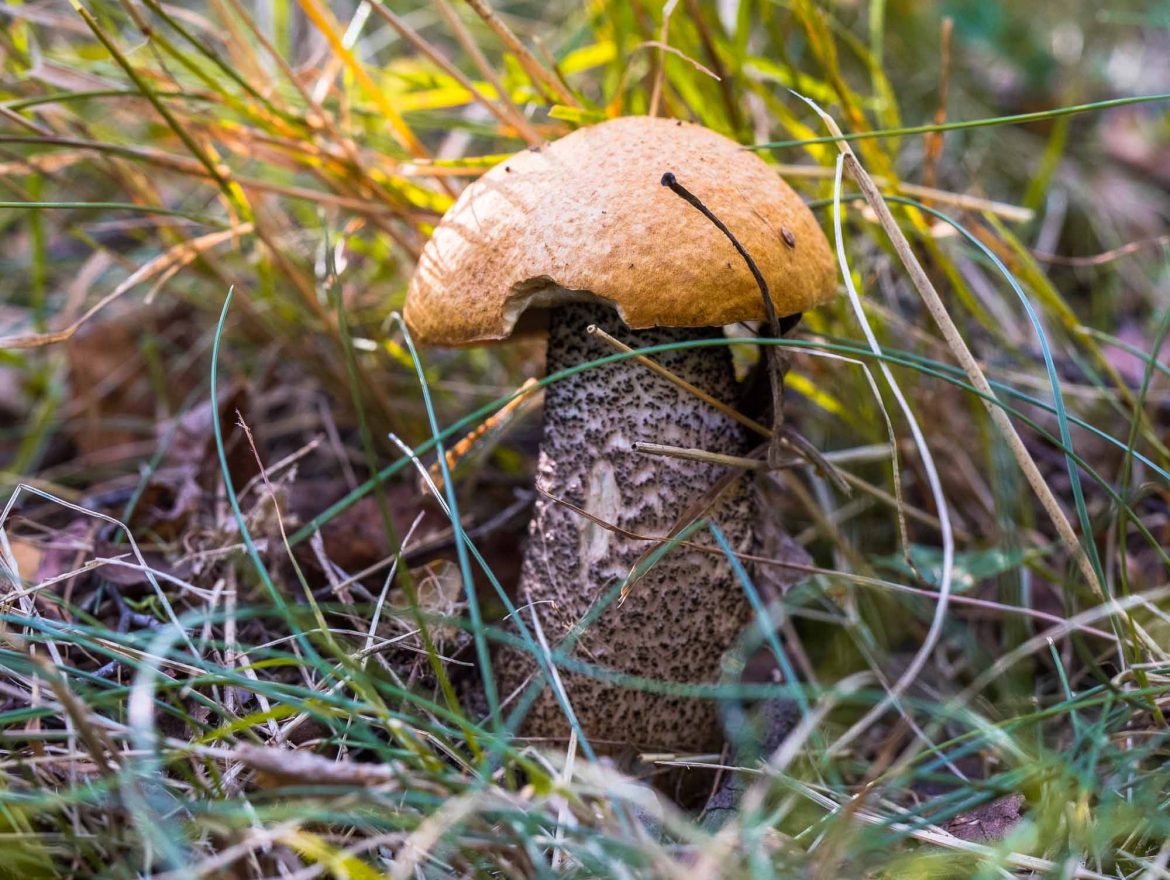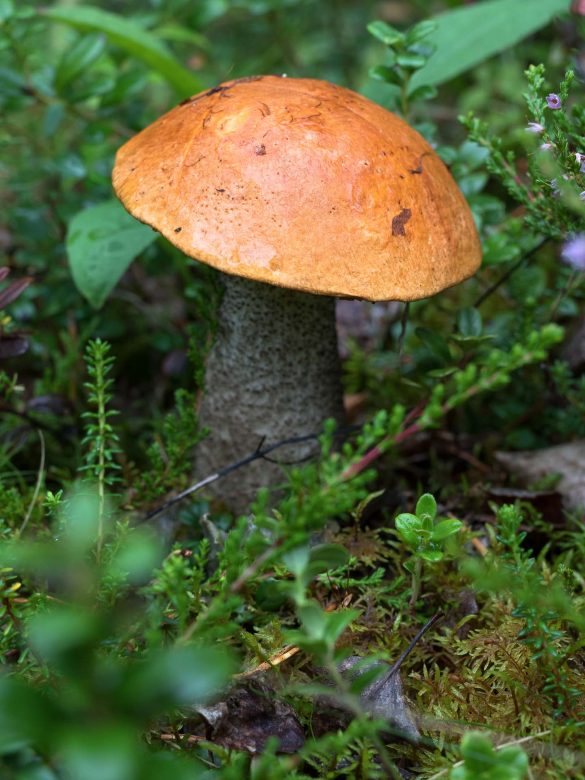Orange birch bolete | Leccinum versipelle


Finnish: Koivunpunikkitatti
Swedish: Tegelsopp
Norwegian: Rødskrubb
German: Birkenrotkappe, Rotkappe
Other Scientific Names: LECCINUM TESTACEOSCABRUM, LECCINUM ATROSTIPITATUM

height: 15 – 25 cm
cap diameter: 10 – 30 cm
trunk diameter: 1 – 3,5 cm
months: June – October
colours: orange cap | white-grey trunk (black scales)
habitat: birch forest, mixed forest
smell: mild, pleasant
consumption: cooked
As the name indicates the orange birch bolete is a close relative to the brown birch bolete featuring an orange cap. There are several different species in the Leccinum family like the also very common orange oak bolete (Leccinum quercinum). Orange boletes are considered tastier than their brown relatives.
The mushroom features a firm stem with characteristic black scales. The pores are greyish in younger specimen but grow lighter when older. The caps can grow up to 30 cm in diameter with the biggest specimens being also the most bleach ones.
The mushroom turns black upon cooking and considered slightly toxic if consumed raw so proper cooking (15 minutes plus) is required. However, they make for a tasty meal and since they are so common they make for some of the most important mushrooms for foraging in the northern countries. They are very mild in taste and can be used along with other mushrooms like chantarelles in sauces, soups or fried.
Very similar species to the orange birch bolete that differ slightly in appearance and usually form a symbiosis with different types of trees like, spruce, oak or aspen are: Leccinum piceinum, Leccinum vulpinum, Leccinum quercinum and Leccinum aurantiacum. They are all edibel and equal in taste.
Notes for cooking: All mushrooms from the Leccinum family are edible and many are appreciated in kitchens throughout Europe. However, newer studies suggest that they should be cooked/heated for at least 15 minutes or otherwise raw consumption can lead to (severe) digestion problems and nausea.
We have compiled this overview with the best of knowledge and belief, but do not claim to be complete and reserve the right to make errors.
Learn more about poisonous mushrooms and mushroom poisons here
↓↓↓
